Be the first to review this product
PRODUCT DETAILS
The standard summer squash, introduced in the 1920s. Large bush plants grow semi-upright and open, and are loaded with glossy dark green fruits with firm creamy white flesh and fine flavour. Plants are productive very early, and over a long period. Best eaten when under 20cm (8" long). Black Beauty zucchini seeds are the best variety for freezing. Black Beauty zucchini is a 20th Century heirloom that won the All American Selections prize back in 1957. It was first introduced to American market growers in the 1920s, and was commercially available as seed from the 1930s on.
Matures in 60 days. (Open pollinated seeds)
- Loaded with glossy green/black fruits
- Best if eaten under 20cm (8" long)
- Best variety for freezing
- Open-pollinated seeds
- Matures in 60 days
All About Black Beauty
Latin
Cucurbita pepo
Difficulty
Easy
We Recommend:
If flavour was to be the defining characteristic, Romanesco Zucchini (SQ724) would come to mind first. This heirloom has old-time, nutty flavour, and a distinctive look that provides instant appeal on the market table.
Season:
Warm season
Exposure:
Full sun
Zone:
2-12
Timing
Direct sow or transplant in late May or early June when soil is warm. For transplants, start seeds indoors in late April or early May. Optimal soil temperature for germination: 25-35°C (68-95°F). Seeds should sprout in 7-14 days.
Starting
Sow seeds 2cm (1″) deep. Sow 3 seeds in each spot you want a plant to grow and thin to the strongest one. Aim to space zucchinis no less than 45-60cm (18-24″) apart in rows 90-120cm (36-48″) apart.
Growing
Ideal pH: 6.0-6.8. These big, fast-growing plants need plenty of moisture and lots of food. Grow them in rich, well-drained soil in full sun. Dig finished compost or well-rotted manure into the beds, and dig in 1 cup of complete organic fertilizer beneath each transplant. Water the soil around them when you irrigate, and always avoid overhead watering, as wet leaves will attract diseases like mildew. Keep weeded. Misshapen or withered fruits can result from incomplete pollination. Make sure to remove these from the plants as you see them, before they begin to rot, and put them in the compost. In the home garden it can be tempting to over-plant zucchinis. One well-grown plant will provide enough fruits for the average family. Instead of planting several zucchinis, use that space for other vegetables.
Harvest
Pick regularly to encourage the plant to keep on fruiting. Zucchini leaves are often very prickly, so pull delicate skinned fruit out carefully. Fully mature zucchini have a hard skin: chickens like them.
Seed Info
In optimal conditions at least 80% of seeds will germinate. Usual seed life: 2 years. Per 100′ row: 180 seeds, per acre: 15M seeds.
Diseases & Pests
Zucchinis that are grown in good soil in full sun will have few problems. One common complaint is the development of powdery mildew on the leaves. This begins to show up in mid-summer as grey patches on the leaves and stems, and it literally is mildew. It results from excess moisture, and can be prevented or minimized by avoiding overhead watering at all times. Try to water plants early in the day, and only water the soil around them. Avoid over-crowding plants to improve air circulation around them. Leaves that are badly affected by mildew can be removed, but throw them in the garbage, not the compost.
| Brand | West Coast Seeds |
|---|---|
| Manufacturer Part Number | SQ710AF |
| UPC | 687704072825 |
| Family | Squash |
| Group | Zucchini |
| Days to Maturity | 60 |
| Certified Organic | No |
| Heirloom | No |
| Open Pollinated | Yes |
| Hybrid | No |
| Pack Options | A pack |
| Package Language | Bilingual |
| Shipping Type | Seeds |

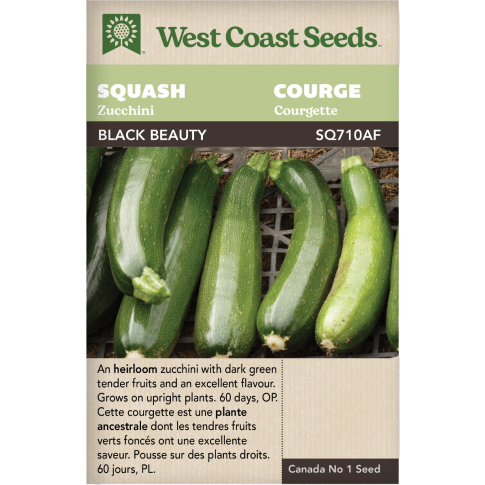


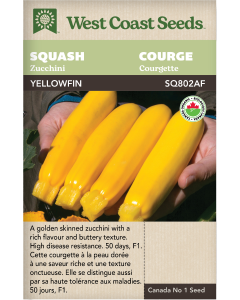

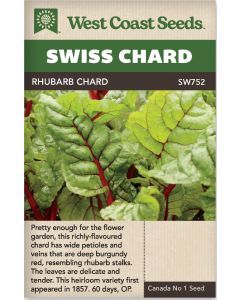

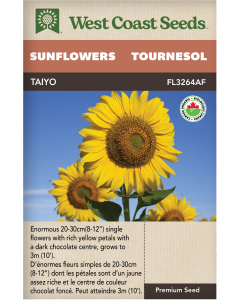


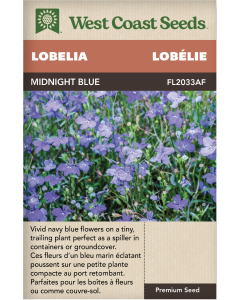


Login and Registration Form